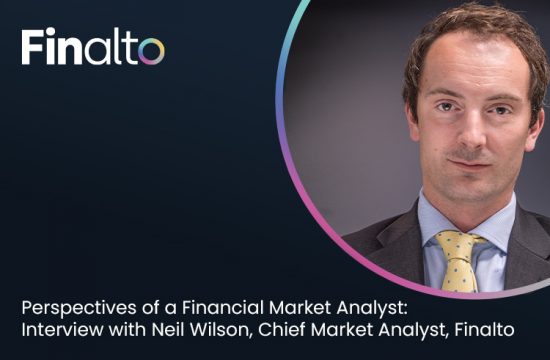
Salvatore Buccellato, Chief Executive Officer at Delkos Research and FX industry veteran. Delkos Research provides various customer behaviour analytics tools to help brokers maximize customer retention, revenue and increase client lifetime value. We spoke with Salvatore about brokers taking a customer-centric approach and how automated retention can add value.
Hi Sal, thank you for joining us. How are you today?
I’m great, thanks. Thank you for having me. I’m looking forward to sharing some of the exciting things we are doing at Delkos with you today.
Tell me a little about what you and your team are doing at Delkos?
Our overall objective is to increase revenues and increase lifetime value for a brokerage. Retention automation is simple, so the question is why don’t more brokers consider it as part of their strategy? It’s a well-known concept whose objective is to deliver better ROI by turning one-time clients from the churn and burn, into repeat clients. It’s a far more cost-effective approach than simply focusing solely on acquiring new clients, which is the approach that most brokers take. This is because most brokers just haven’t realised yet how powerful segmenting your database can really be.
We are a behaviour analytics and client retention solutions company. Essentially, we take the data you have collected and turn it into valuable company insights. By understanding your clients’ behaviours, you can identify opportunities to deliver the right message at key moments in the client lifecycle to increase revenues, retain clients and ultimately reduce churn. Behaviour analytics is really at the core of customer-centric ecommerce and we feel this is yet to be fully explored by our industry. Those who have implemented retention strategies are proving their place as leaders in the industry.
Online services can be cold and impersonal, by creating personalisation, a broker really builds a connection with the client which will, in turn, help them feel more secure and thus invest more, trade more frequently, refer more and generally be more likely to stay loyal.
What is it about automating retention that makes it so valuable to a brokerage?
When brokers are looking at accelerating growth, they implement acquisition strategies that are extremely costly and resource consuming. They rarely consider the fact that they have already invested so much money acquiring these clients. Our theory is that brokers should do more, with less of their resources by implementing automated retention strategies to reduce client churn.
Client drop-off after the deposit is bad practice, not only relating to the reputation of the brokerage and lack of generating efficient ROI, but also because statistics state that if a client has had a positive experience with a brand, 77% of them are more likely to refer the broker to a friend.1 Additionally, customers with an emotional connection to a brand have a 306% higher lifetime value2.
So you started working in FX in 2007, tell us a little bit about what the customer experience was like then in comparison to how it is now?
When I first started in the industry, margins were significantly higher and in turn company resources were spent on human capital. Back then the personal account manager or customer support agent was the key approach for converting and retaining clients. Since then regulations have tightened and margins have reduced, there is less focus put on personalized relationships with clients. AI and bots have replaced these supporting roles and left clients exhausted with the absence of care, let alone the helping hand through their trading journey. Drop-offs are higher than ever and most brokers are so caught up in monthly FTDs that they don’t realise they are missing out on an essential part of the pie.
Today, technology and the customer journey has changed so much in how clients consume products and services. It has flipped from being just responsive to now being preemptive of what the client may require. If companies consider ongoing segmentation of their clients into behavioural micro-segments it means that they can successfully anticipate trading behaviour and create automated triggers which are action, time and event-related. Meaning that the customer not only feels looked after but also considers the broker to be so savvy that they can read their mind for what they want next. When we put it like this, why would a trader ever leave? This critical engagement occurs after conversion and when these automated triggers are implemented correctly, the traders’ journey should cycle again and again. So that all the broker’s effort should only really be required when the first deposit occurs.
…And where do you think things will go in 5 years from now?
If 89% of customers switch product or service providers following a poor customer experience,3 we believe this will only intensify further within the coming years. ‘Spending for Marketing Automation tools will grow vigorously over the next few years, reaching $25.1 billion annually by 2023 from $11.4 billion in 2017.’4 This figure is astonishing, as it’s more than double in the space 6 years, especially when you consider that brokers already have all the tools they require for conversion such as a CRM, an educational platform, signals and analysis services, etc.
The future predicts that across all industries globally customer experience through retention will not only measure how successful a company is at acquiring new clients but also how successful they are at satisfying the long-term needs of their existing customers.
We are becoming more digital in our transactions and those who choose to ignore the big data resources which they have at hand will suffer the consequences of operating blind. Those who embrace it will thrive.
_____________________________________________________________________________________
4Forrester “Marketing Automation Technology Forecast, 2017 to 2023










